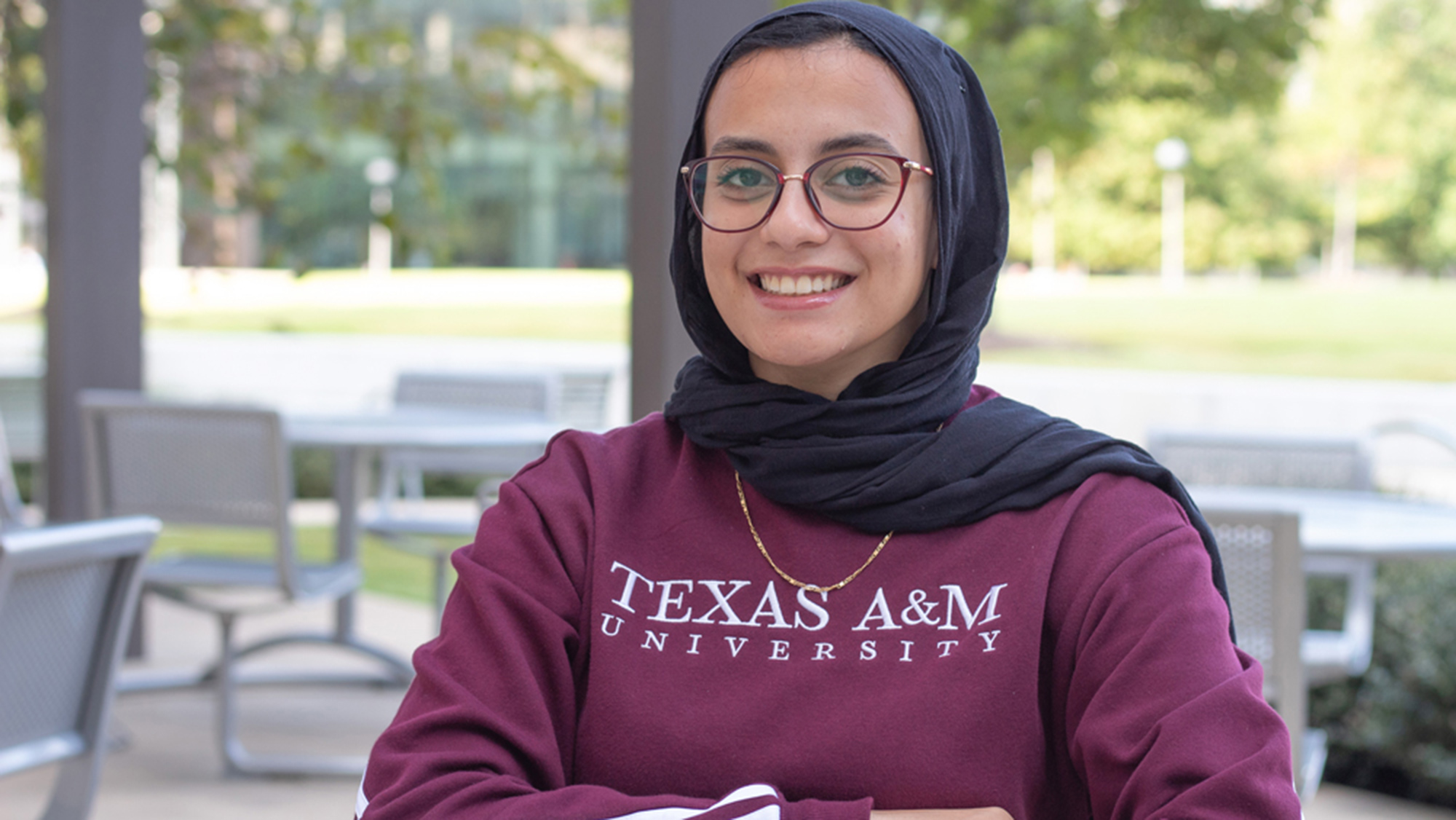
What if we could do more with carbon dioxide (CO2) than lock it safely away in the subsurface? What if this greenhouse gas could instead be used in geothermal energy and power millions of homes worldwide?
Touka Elsayed, a master’s student in the Harold Vance Department of Petroleum Engineering at Texas A&M University, is winning attention by testing this concept in her research of geothermal reservoirs and CO2 properties. Her work involves modeling geothermal systems' size and heat transfer abilities, investigating how well CO2 would work in such systems, and analyzing the economics and technology involved.
“It’s called CO2 plume geothermal energy,” said Elsayed. “This innovation aims to harness the potential of carbon dioxide to generate geothermal energy while substantially contributing to sustainability and benefiting the environment.”
A new energy approach
Traditionally, geothermal energy can be sourced from natural reservoirs or dry rock. Natural reservoirs are usually associated with hot water or steam from beneath the geysers and other hydrothermal vents to power turbines for energy. Dry rock provides geothermal energy when drilling operations reach hot rock, and water is injected to extract heat from the rock through hot water or steam.
Elsayed is investigating a newer approach, called CO2 plume geothermal energy (CPG) systems, where carbon dioxide could be injected into hot porous reservoirs instead of water. Her modeling studies showed this approach allows for a more efficient heat extraction because CO2 has superior flow properties than water, such as being more buoyant, and thus would require less energy to make it flow out. Results revealed CPG also offers a method for carbon sequestration, providing a dual benefit of renewable energy generation and greenhouse gas reduction.
This innovation aims to harness the potential of carbon dioxide to generate geothermal energy while substantially contributing to sustainability and benefiting the environment.
Using CO2 safely
Thanks to previous carbon capture utilization and storage (CCUS) studies, Elsayed already knew storing CO2 in the subsurface must meet specific standards to be safe and effective:
- One or more caprocks or layers of impermeable rock are needed to keep the CO2 from permeating back to the surface.
- The injection sites must be deep enough so that pressures and temperatures keep the gas dense or compact, so it takes up much less space than at sea level or above.
- Porous sedimentary rock layers or a saline aquifer must be below the caprock to house the injected gas.
Gaining recognition
Elsayed created a poster of her results and presented it at the Geothermal Rising Conference in October 2023. She won first place out of a competition of 40 posters. She was among five graduate students awarded the prestigious Geothermal Rising Marcelo Lippmann 2023 Graduate Scholarship and the only master's student.
“Knowing that a respected organization like Geothermal Rising recognized my work and believed in my potential was truly inspiring,” said Elsayed. “I felt an increased awareness about my topic, which was new to everyone there. Several companies were curious to know more.”
I always believe the journey of being an engineering student is not just about earning a degree. It is about shaping your mindset and skills to become a lifelong problem solver.
In the same conference, Elsayed presented a paper she co-authored with fellow graduate student Ahmed Merzoug and their advisor, Dr. Rita Okoroafor. The paper, “Numerical Investigation of the Effect of Fracture Aperture Anisotropy on Thermal Breakthrough Using THM Modeling,” explained how fracture surfaces can impact the long-term performance of geothermal energy from hot, dry rocks.
Factoring techno economics
Elsayed is currently performing technical and economic feasibility studies, or techno economics, of CPG systems paired with a carbon capture project.
Some of the many factors she must estimate to prove the system is feasible are:
- The different capturing technologies and the cost estimation for each.
- The cost analysis for different components of a full CCUS value chain.
- The heat energy gained and available to sell to utilities over the lifespan of a CPG system.
Elsayed hails from Egypt and said she has enjoyed her education at Texas A&M because students are so welcoming. While her dream job would be working as a top-tier oil and gas company strategic manager, she also wants to help facilitate the energy and sustainability transitions needed globally.
“We need to be open to new ideas and technologies,” said Elsayed. “I always believe the journey of being an engineering student is not just about earning a degree. It is about shaping your mindset and skills to become a lifelong problem solver. Everyone has the potential to make a significant difference.”